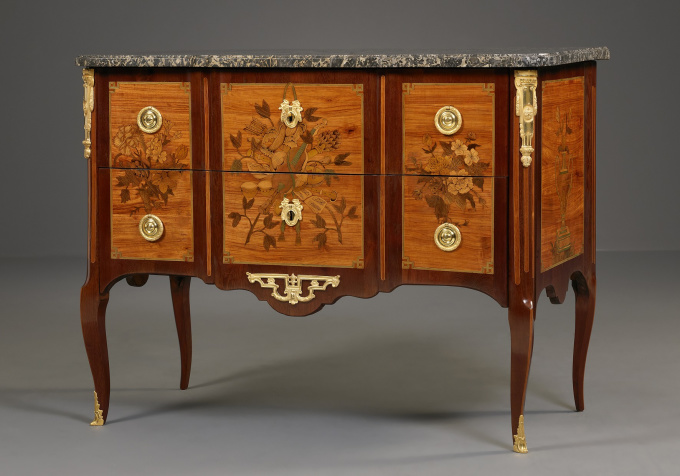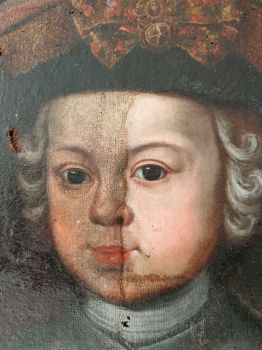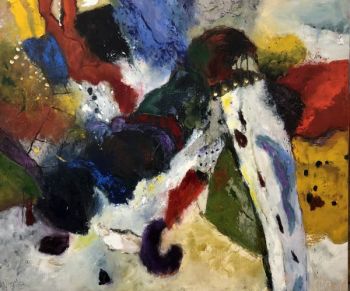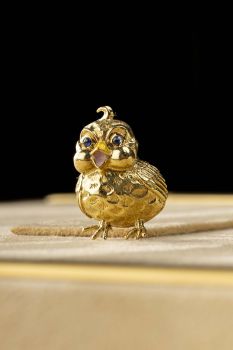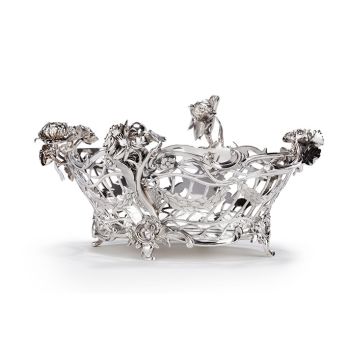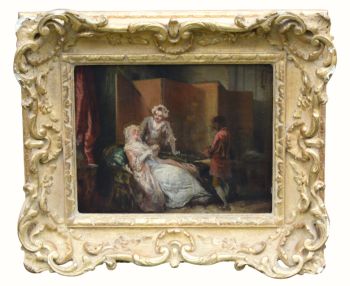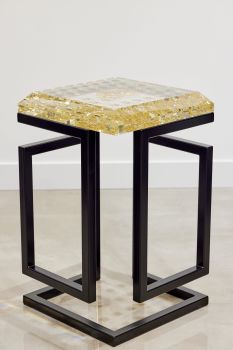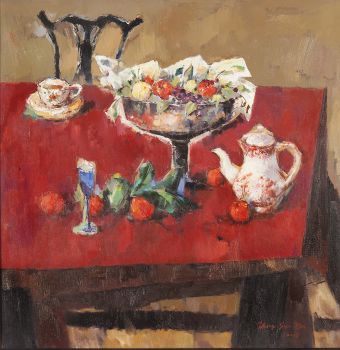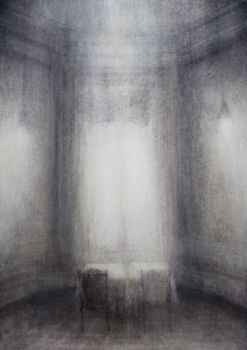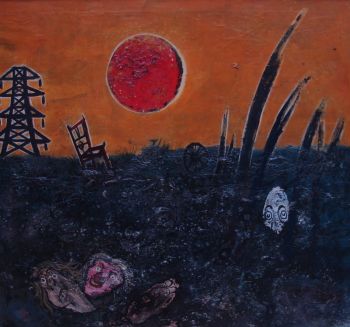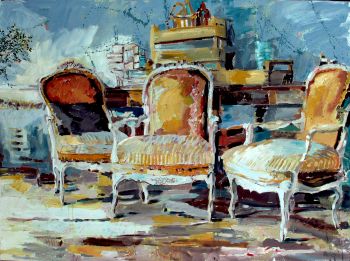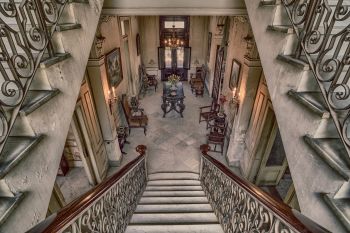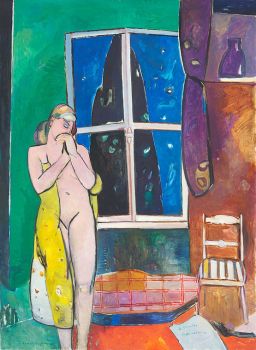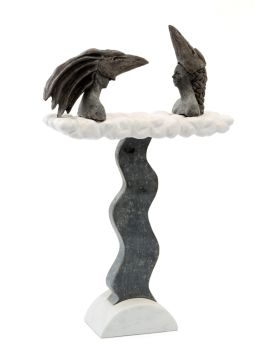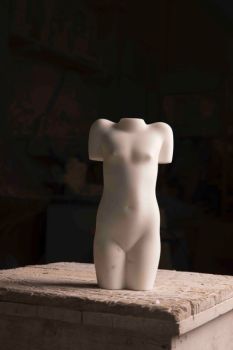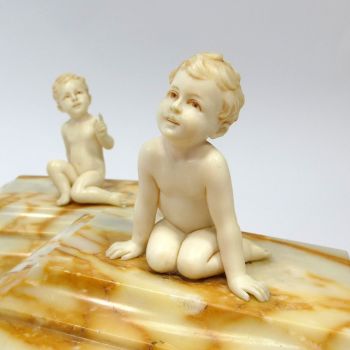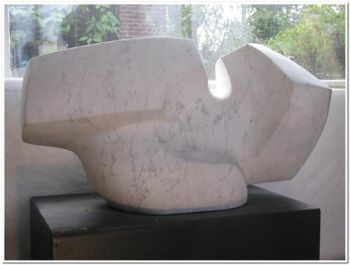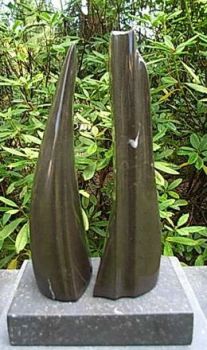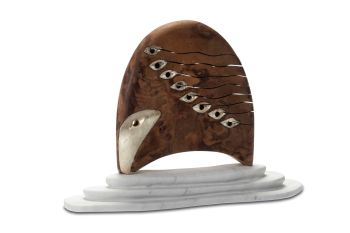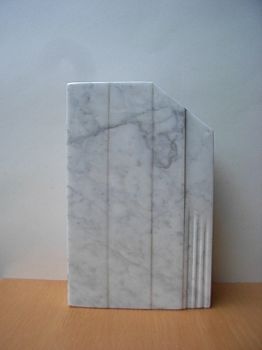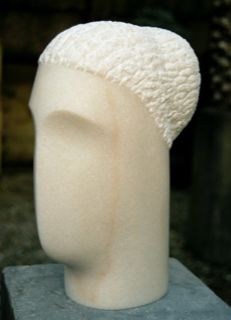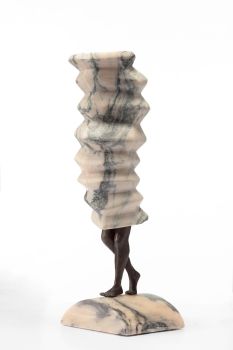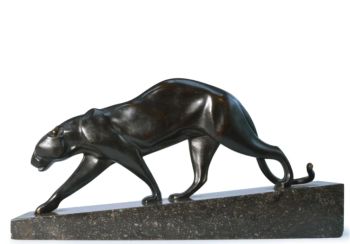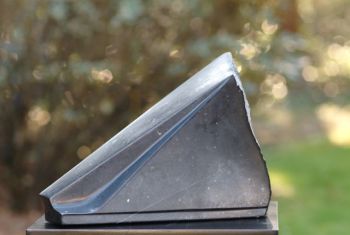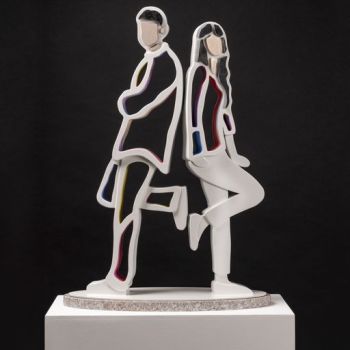French Transitional Commode 1770
Artista Sconosciuto
MarmoPietraLegnaMarmo GrigioQuerciaPalissandro
87 ⨯ 114 ⨯ 61 cm
Attualmente non disponibile tramite Gallerease
- A proposito di opere d'arteThis is the signature of Jacques Bircklé (1734 – 1803) who became a “maïtre ébéniste” (master furniture maker) in 1764 and who also was a “Juré des Menuisiers-Ebénistes”: a Juror both of the Guild of Woodworkers and the Guild of Furniture makers.
Jacques Bircklé produced wonderfully varied and fashionable furniture, always of the highest quality. He was an exceptionally able marqueterie maker and used different sorts of wood and coloured wood to great effect. He frequently used light coloured woods on a darker ground and his themes: vases, flowers, garlands and music-trophy’s are usually surrounded by a Greek fret.
Bircklé used to work for members of the French Royal House: Queen Marie-Antoinette, Madame Elisabeth (the youngest sister of King Louis XVI and the Duke of Orléans. And to this day his work is to be found in the Palace of Versailles and the Petit Palais in Paris, as well as in the Museum of Decorative Arts in Paris.
The commode of Transition form with a breakfront, has two drawers. The four rounded off corners as well as the corners of the breakfront are decorated with marqueterie representing a fluted column. The front of the commode is divided into three panels, the sides contain one panel each. All panels are surrounded by Greek frets.
The middle panel on the front shows a music-trophy with a violin, several flutes, drums, a horn and a score. Added to the instruments and score are a quiver, a torch and two birds.
On the left and right of the front the marqueterie within the panels consists of bunches of flowers. Both on the right and left side of the commode, the marqueterie shows a plinth with a vase containing several flowers.
The marqueterie of the middle panel on the front is very similar to that on a commode illustrated in Kjellberg, Le mobilier français du XVIIIe siècle, Paris 2002, p. 77, ill. d.
Stamped: J*BIRCKLE JME. - A proposito di opere artista
Può succedere che un artista o un creatore sia sconosciuto.
Alcune opere non sono determinate da chi sono state realizzate o sono state realizzate da (un gruppo di) artigiani. Esempi sono statue dell'antichità, mobili, specchi o firme non chiare o leggibili ma anche alcune opere non sono affatto firmate.
Inoltre puoi trovare la seguente descrizione:
•"Attribuito a …." A loro avviso probabilmente opera dell'artista, almeno in parte
•“Studio di ….” o “Officina di” A loro avviso un'opera eseguita nello studio o nella bottega dell'artista, eventualmente sotto la sua supervisione
•“Cerchio di…” A loro avviso un'opera del periodo dell'artista che mostra la sua influenza, strettamente legata all'artista ma non necessariamente al suo allievo
•"Stile di..." o "Seguace di..." A loro avviso un'opera eseguita nello stile dell'artista ma non necessariamente da un allievo; può essere contemporaneo o quasi contemporaneo
•“Modalità di…” A loro avviso un'opera nello stile dell'artista ma di epoca successiva
•"Dopo …." A loro avviso una copia (di qualsiasi data) di un'opera dell'artista
•“Firmato…”, “Datato…” o “Iscritto” A loro avviso l'opera è stata firmata/datata/inscritta dall'artista. L'aggiunta di un punto interrogativo indica un elemento di dubbio
•"Con firma....", "Con data...", "Con iscrizione..." o “Riporta firma/data/iscrizione” a loro avviso la firma/data/iscrizione è stata aggiunta da qualcuno diverso dall'artista
Artwork details
Related artworks
- 1 - 4 / 12
Artista Sconosciuto
A Surinam-themed Amsterdam long-case clock1746 - 1756
Prezzo su richiestaZebregs & Röell - Fine Art - Antiques
 A cura di
A cura diGallerease Magazine
1 - 4 / 17Artista Sconosciuto
UN NETSUKE MARINO IN AVORIO DI UN OLANDESE CHE TIENE UN FAN . CINESE18th century
Prezzo su richiestaZebregs & Röell - Fine Art - Antiques
Artista Sconosciuto
UN NETSUKE IN AVORIO DI UN OLANDESE CHE TIENE UN GALLETTO18th century
Prezzo su richiestaZebregs & Röell - Fine Art - Antiques
Artista Sconosciuto
The Stamford Raffles Secretaires.1800 - 1813
Prezzo su richiestaZebregs & Röell - Fine Art - Antiques
1 - 4 / 24Gyrinus
Verre gravé pointillé avec putti1764 - 1766
Prezzo su richiestaPeter Korf de Gidts - Antiquairs
Artista Sconosciuto
A Surinam-themed Amsterdam long-case clock1746 - 1756
Prezzo su richiestaZebregs & Röell - Fine Art - Antiques
 A cura di
A cura diGallerease Magazine
1 - 4 / 24- 1 - 4 / 24

